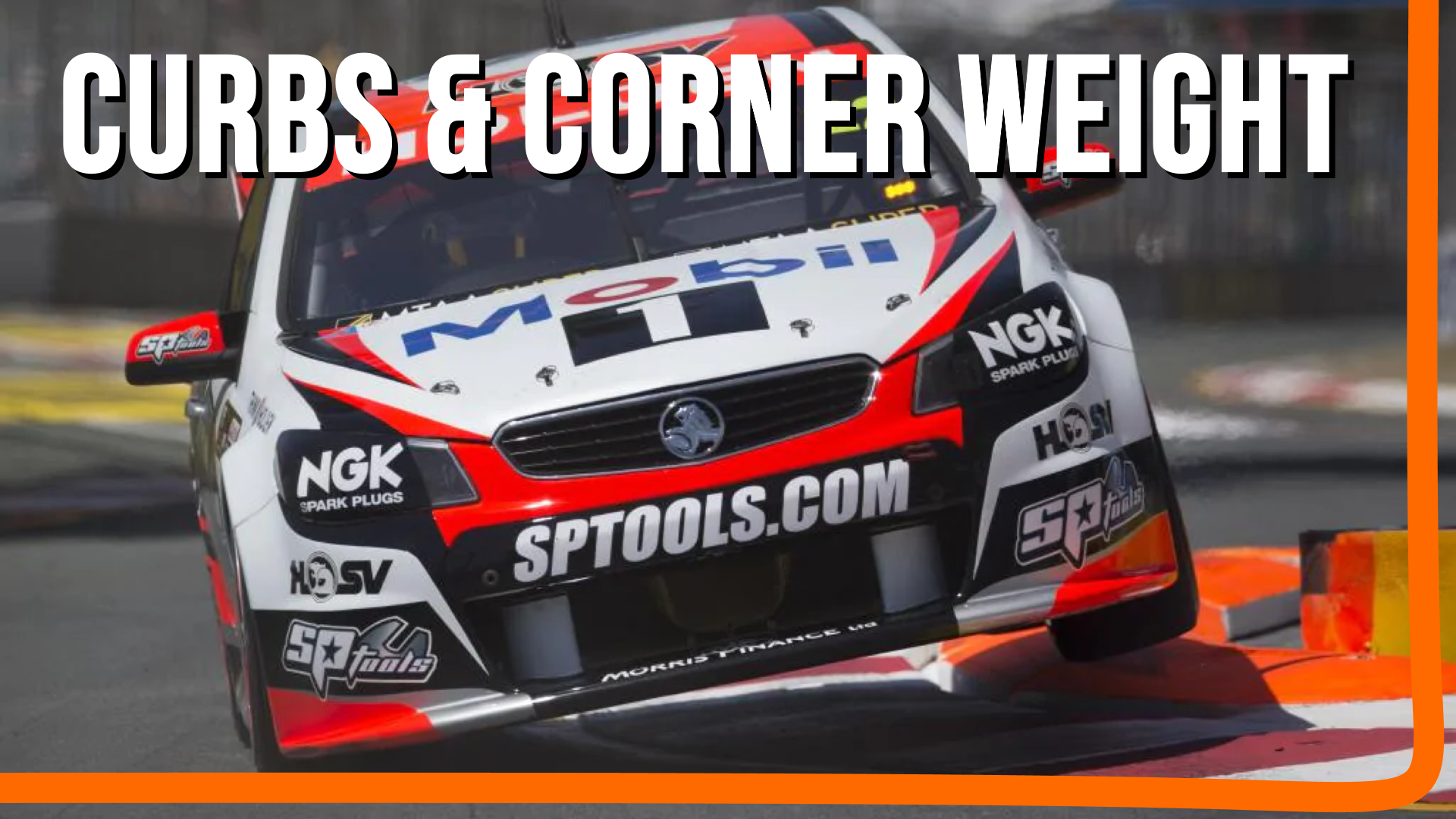Recently I was having a private email conversation with a user regarding a specific setup issue that I found truly interesting. That issue was simply that his car would over-rotate at the apex of a corner. This problem applied to any car type and across all sims that he was using. After some back and forth we deduced that the problem was showing its face at the point that his car’s inside front tire was climbing up the curbing at the corner apex, and we set about resolving it.
What is happening
We have all been there before; going through a corner, hit the perfect apex by getting up on the inside curb, and the car starts to spin out. So what is happening to cause this? The answer is the compression of that inside spring as it climbs the curb. With that compression comes an increase of grip to that very same wheel. And now the front of the car has more grip than the rear at a time when the car needs a true balance between front and rear. Even a slight shift in forward grip at this time makes for a very unhappy car. His problem was due to the curbing causing dynamic corner-weighting of his setup.
Corner-weighting (also known as “wedge” or “cross-weight” to you stock car fans) is simply adding more weight to two diagonal corners of a car (left-front and right-rear in this case). Corner-weighting can also be applied by an increase is spring-rate to those same diagonal corners. An increase in spring-rate means an increase in grip to that tire *if* that tire happens to be an inside tire. Try it on your favorite long corner (Parabolica at Monza maybe). Increase the inside-front spring a bunch, then try that corner. Tons of extra front grip!
Illustration with toys
To illustrate the problem even further, I asked him to grab his favorite model or toy car (from the kid’s room, of course) and place it on his desk. Then place a pencil/pen under the left front wheel (this is simulating a very tall curb while navigating a corner to the left). What happens to the car when that pencil is under just one wheel is the right-front and left-rear both want to lift off the desk/race-track, teetering on a diagonal line drawn between the left-front and the right-rear. This has corner-weighted both the left-front and right-rear to an extreme. However, if you factor in the cornering forces (cornering to the left), the right front will be pushed back into the desk/track surface, leaving only the left-rear up in the air. That tire is no longer providing much, if any, grip. And to to top it off, the right-rear is now being overloaded with additional corner-weighting, causing even less rear grip.
Problem solving
So how can we go about resolving the problem? Well, sometimes you just have to drive around the curbing and not use it. An example of this is turn-3 at Sebring International Raceway. That curbing has wreaked complete chaos on more than a few of my races there. So tall, and so abrupt is the elevation change, that I spin out if I even glance at it wrong. But, for sake of discussion, lets pretend we are working with a curb that is not so angry… AND we do not want to mess up our entire setup for a single corner on the track.
First, let us stop that inside-front spring from compressing so easily. This can be done by slowing that corner’s spring from compressing. If you have read my articles on dampers in the past, you know that I talk about them as timing devices. “Springs may dictate how much weight is transferred; dampers dictate how and when that weight is transferred.” – from my eBook. Depending on the curb, we are likely talking about fast-damping in this situation. An increase in bump/compression on that damper will slow that spring from compressing, in turn slowing the process of the curb corner-weighting your setup, at least for a small period of time. The spring will eventually get to full compression and you will still have the problem.
We know that the problem is still there, but will take a few extra milliseconds to show itself. So let’s try another trick to keep the grip balance more neutral between front and rear, by allowing that left-rear to stay in better contact with the track surface. We can accomplish this by allowing that spring to rebound more easily/quickly. You guessed it, decrease the rebound of this damper to make that happen. Again, this is just a fraction of added grip to that corner, but a fraction is exponentially better than zero.
We are talking about some extremely subtle changes to the car’s setup that may not have a huge impact on the lap time, but it will have a huge effect on his overall race time. If it saves him from a spin or two (or ten in may case) then he will surely finish higher up the order come the checkered flag.
You can find more setup guides here
